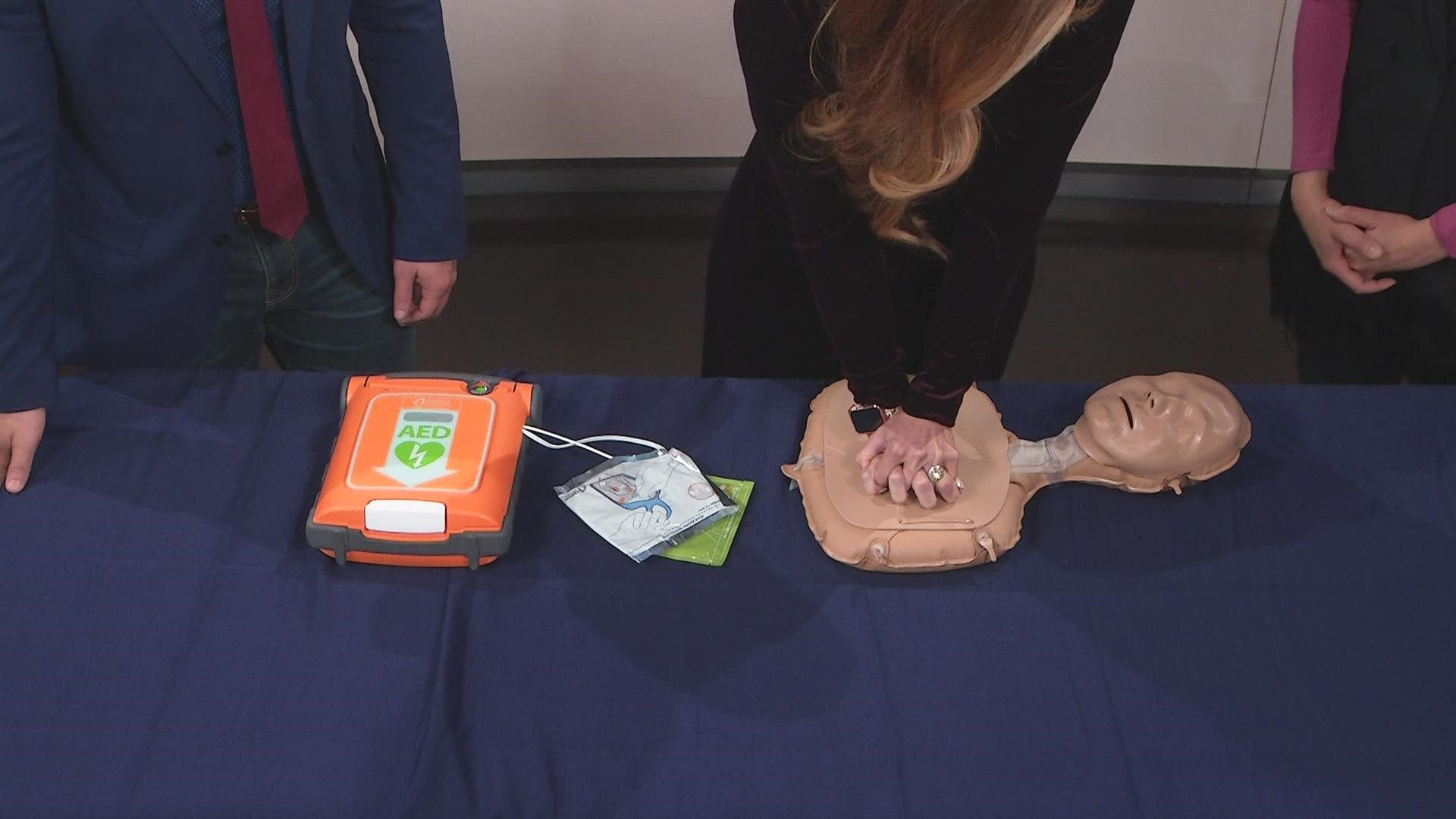DENVER — Buffalo Bills' safety Damar Hamlin has officially returned to Buffalo to continue his recovery, a week after going into cardiac arrest and having to be resuscitated on the field during a game in Cincinnati.
However, his case has underscored the need and importance of CPR, otherwise known as cardiopulmonary resuscitation, as well as how an AED (automated external defibrillator) can help in lifesaving efforts.
For an out-of-hospital cardiac arrest, seconds can be crucial when performing CPR. If performed correctly, it can increase the chance of survival by 2-3 times for a person if their heart stops. Essentially, it's intended to pump blood to the organs while the heart is stopped and until it can be restarted.
9NEWS Medical Expert Dr. Payal Kohli shared the following advice about the best practices when administering CPR.
When is CPR used?
When someone meets all of these conditions:
- Collapses
- Doesn't respond
- Isn't breathing
- Doesn't have a pulse
When you find someone down:
- Call 911.
- Check for signs of life (breathing, pulse).
- Start CPR within 10 seconds.
- Tell someone nearby to get an AED, which is also known as an automated external defibrillator. If nobody else is present and/or no AED is found, continue with CPR until first responders arrive or until the person is exhibiting signs of life (like breathing).
Best practices when conducting CPR
- Compressions only.
- Hands stacked with elbows locked over middle of breastbone (usually between nipple line) for adults.
- Push hard (depress 2'' but not more than 2.4'') and fast (100-120 times a minute, to the beat of Bee Gees 'Stayin Alive'). It is possible that CPR can break a person's ribs due to the force needed to pump blood from the heart throughout a person's body.
- Allow for chest recoil between compressions (to allow heart to fill).
- Minimize interruptions as much as possible. The process of conducting CPR can be exhausting. If another person is available to help, switch off every couple of minutes.
- Get on the AED while doing chest compressions.
CPR for infants: 2 fingers on breastbone.
CPR for children: One hand on breastbone.
CPR for family members: If you feel comfortable, give rescue breaths at ratio of 30 compressions to 2 rescue breaths. Ensure each breath lasts about 1 second and makes the chest rise; allow air to exit before giving the next breath.
To place the AED (automated external defibrillator)
- Remove clothes and/or any obstructing objects covering the chest area.
- Have a person nearby tear open the AED patches.
- Place on the bare skin. One on the person's right side upper chest area and the other on the person's left side below the heart.
- Follow the instructions listed on the AED.
Colorado's Good Samaritan Law
The Colorado Good Samaritan Act is in section 13-21-108 of the Colorado Revised Statutes. The 911 Good Samaritan Law states that a person is immune from legal prosecution if they act, in good faith, in an emergency situation to give aid to a person who is injured.
SUGGESTED VIDEOS: Mental Health & Wellness
MORE WAYS TO GET 9NEWS
Subscribe to our daily 9NEWSLETTER for top stories from 9NEWS curated daily just for you. Get content and information right now for can’t-miss stories, Next and Broncos content, weather and more delivered right to your inbox.
DOWNLOAD THE 9NEWS APP
iTunes: http://on9news.tv/itunes
Google Play: http://on9news.tv/1lWnC5n
HOW TO ADD THE FREE 9NEWS+ APP TO YOUR STREAMING DEVICE
ROKU: add the channel from the ROKU store or by searching for KUSA.
For both Apple TV and Fire TV, search for "9NEWS" to find the free app to add to your account. Another option for Fire TV is to have the app delivered directly to your Fire TV through Amazon.

